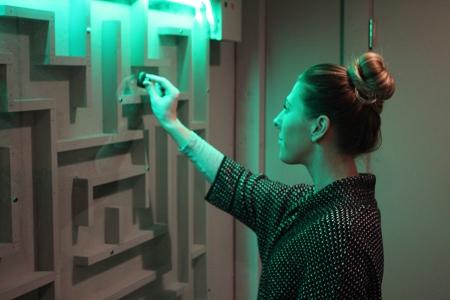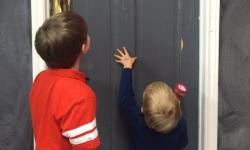Top 11 Puzzle Ideas for Escape Rooms

Looking for the puzzle ideas for escape rooms might become a little bit of a challenge. Especially when it looks like all of the creative clues for escape rooms have been already known and all of the combinations have been tried. But there is always enough opportunities for everyone who is planning to create one more of these unusual games.
The fact that it has been so popular recently gives us a clear message that escape room games do not bore people — that’s why they are always coming back for more. Simply because these games are constantly developing and growing. The escape room puzzle ideas have clearly no limitations in terms of creativity and entertainment. Although now there are certain standards of the puzzles the real escape games are offering.
So we decided to create our guide on the best puzzle ideas we could just think of! Hope this piece will help out everyone who is interested in learning more about the escape games: how to play them, how to create them, what to look for and, most importantly, how to escape! So here we go, welcome to our guide of 11 ideas of the game challenges.
Hide the important objects
We can start with the basics of the puzzle ideas for escape rooms which are the hidden objects. After all, it is inevitable to use «hidden objects» puzzles in any type of the escape room in all over the world. You can’t do without it. So here are some tips on how to deal with them.
Hide objects in the old-school way (under the pot with flowers, into the book, putting the key under the rug in front of the door, etc.). It only seems obvious but in fact, people with adrenalin rushing through their veins might get a nerve looking for it.
Another great thought is to go with some modern, exclusive tricks like hiding hints which can be found when they are illuminated by a blacklight, for instance.
Engage people in a team work
Use puzzles that require at least two person job. The most important thing here — at least two. This will make a puzzle more complicated and will help to build a proper team work. For instance, play the record with the hints partially and simultaneously in different rooms. So a person will have to be in each room where the record is being played in order to catch the hint.
Similar good idea is to make a puzzle in one room and the answers to it in different rooms, so the team will have to work on one case on a wider territory.
Use the light to hide the clues
Play with the light. Light, or to say correctly — the right usage of light, is extremely important for the right mood, for the fun part and for hiding hints and puzzles! So go ahead and use the light effects and especially don’t be shy with the black light. Although such tricks might not be appropriate in all of the escape rooms themes, like in the historical ones. But a neon light in a room from the future might do perfectly good.
If you fancy the idea with the lighting, you should also check this out. A great idea is to use the sparkling tips, which can be seen only by looking from the special angle or using a UV-paint. One way or another, such effect might also require some extra help in order to see them, like additional hidden tools, so it’s a long run puzzle. But if you are still not done here, there is the last tip on that. Don’t use any light at all! Create a puzzle which needs to be done in a total darkness.
Letters/numbers/texts — decrypt everything
Hope you are still following cuz we have a good one here! Experiment with texts as a form of the riddle for the game. Texts are great for hiding the clues or, in general, for making lives of the players slightly more difficult. Such text puzzles can take numerous and numerous forms and here are just a few of them
Try to start with the decrypting. It is the most obvious and yet the most challenging one. It most usually takes a place in a way of a hidden message within the text. For instance:
- You can make a whole sentence or word out of the capital letters from the random text or the first lines of the poem.
- Decrypting can also be simply hiding the helping messages inside the ordinary text, by highlighting them, using a different font, etc.
- You can also use hieroglyphics, so players will have to use some imagination.
- Using letters instead of numbers is another great way to do it.
- You can break the code into pieces and write them on the images you have in the room, so to reveal the desired numbers they will need to work extra hard.
One more great idea for the game is using texts that can be read only in the mirror reflection. Even if this trick might be too obvious judging by the look of the letters, you can always hide the mirror and make players search for it.
Use some ordinary-thinking patterns in the game
Use the ordinary elements or actually think rationally for a second. That will be so unexpected and confusing that only will benefit the game. For instance, hide the clue in some place so obvious that no one will look for it there. Like put the important keys into the bowl for keys or hide something under the bed, or make a safe deposit behind the picture on the wall.
Another way to do is to make the players find the puzzle by interacting with the objects in a way we all suppose to use them. Hide a next clue inside the candle, so the player will have to burn it in order to see it. Place an exercise bike and use it to reveal some hints after someone rides it.
Or on the contrary, implement to the game the most ordinary things but use them in an unusual way. Take an old fashioned phone and use it as a calculator.
Build some secret rooms
So you must be wondering what are puzzle ideas for real escape rooms we haven’t covered yet. There is a strong feeling that something was clearly missed out. And you are totally right! There is a whole bunch of escape room clue ideas that are totally crucial for this list. Those are ideas fell into the category of the secret hiding spots.
For example, secret doors! Everyone will get overexcited about finding a secret door. You can dedicate the puzzles of the entire room in order to pursue finding the lever mechanism which will reveal a secret door. On the contrary, you can also build a trap door. The door which will lead the player to the dead end or actually the unexpected trap somewhere on the way, so the unlucky one will have to search for the way out from it in total solitude.
Use the decorations as the hints
Use decorations! The items of decor, of what help the guests to feel the atmosphere, can also serve you well in hiding the puzzles. You can hide some code in the pictures or leave some clues inside the plant. Or you can actually use the picture as the clue itself, use the image of a famous person that must give the team a hint at some point. Within a moment a piece of design turns into the puzzle.
In general, you can try to use more of the decor items, like furniture for instance. Create a clue that can be visible only from one particular point of view. Literally. For example, just place a hint somewhere that it could be seen only from a certain physical position, calculate the certain height and angles. Like the player get a chance to see it only if he/she is lying on the bed, sitting on a chair in a special spot, etc.
Place some riddles
Play with puzzles. Just openly put some riddles on the game set, so those who play could find them with no problem, solve them and reveal the hint for the next puzzle. It is the classics of the escape rooms. Things like:
- labyrinths on the wall,
- sudoku games,
- rubix cube,
- crosswords,
- even secret boxes that you need to twist to open up the lock.
All of them make a huge deal for the game flow in the real life escape rooms.
Create assemblies to collect
Create a riddle that will require to assemble something. Place in the gaming space objects that so obviously belong to one another that eventually someone would try to put them together. Put clues which will appear only after the puzzle assembly is completed. Like finding food in the fridge, book on a bookshelf, etc. Place them in different rooms to increase the complexity of solving riddles.
Or, on the opposite again, put two objects together and make sure they have nothing in common and should not be even close to each other. Or place an item into a completely contradictory environment. In a way that it will immediately outstand and cause some questions. Those who reveal it should be rewarded with some new clues.
To exceed the version of assemblies you can also develop a set of items that will be spread all over the gaming space. After some time inside the game, the players will see the pattern and focus their attention on looking for the items ( completely ordinary objects like cards, cubes, stickers, whatever) from the set.
Use the sounds to guide the team
Don’t you ever underestimate the power of the music! Use the sounds to make the game go more entertaining. Make a system of sounds that can help out the team to look for the puzzles. Like, use a distinguishing sound every time the player press the wrong buttons, or, on the opposite, when they are getting closer to the puzzle solution.
How about playing the record with the hidden or decoded riddle in it? Like, play a very famous song that will definitely lead the teammates to the clue you left for them. Another way here is to place the radio somewhere in the room so that eventually someone would decide to turn it on. You might also hide the batteries from the radio so it will make the game harder.
For the level of extra difficulty, you can use the Morse code. Just put the record on repeat till the players will understand there is some meaning in it. Or play a simple tune and leave the musical instrument in the room, so the tune can be duplicated on it.
Encourage teammates to do some physical activities
Engage the teammates into some extra physical activities. Creating a puzzle which is connected with the physical strength or a good reaction, or working on any hand-eye coordination tasks can be lots of fun for the players. There is always a good reason to put darts game inside the room or show some hints meaning «the basketball ring is here for a reason».
You can reveal a clue to the next puzzle after the player hits the right target with a ball or even with a water gun. Why not? Another cool way to do it is to make them tie knots on a long rope, for some reason, of course. If that physical activity is not enough, make the players search for the solution how to get the clue hidden in a very tight or small spot, or on the opposite, make the object too large to go through the doorframe to the main room.
If you are looking for a great start, there is always a way. Like chaining teammates to each other in pairs and making them search for a way out.
Have a good game!
Hopefully, you have enjoyed our list of escape room puzzle ideas made for you. We had much fun learning all those ideas, or most of them, on practice and we must say — they do work! Keep on trying to create even greater and more interesting ideas for the escape games. Experiment, learn, get inspired and play. Have fun and good luck in your next awesome game in EscapeHour!



